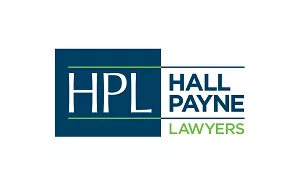The Australian Health Practitioner Regulation Agency (AHPRA) is aware that vexatious notifications are made against health practitioners from time to time. Medical complaints, or notifications, can relate to a health practitioner's professional conduct, performance or personal health. Notifications are particularly difficult for doctors, nurses, paramedics and other health providers to deal with when they may have been made vexatiously.
Research about vexatious complaints commissioned by AHPRA
AHPRA commissioned research considering vexatious complaints. The results of the research were published by the University of Melbourne School of Population and Global Health Policy, Centre for Health Policy. You can view "Reducing, identifying and managing vexatious complaints" here.
This report concluded that truly vexatious complaints account for less than 1% of complaints made in the health sector.
We are highly experienced in helping registered health practitioners regarding complaints. Call for assistance: 1800 659 114
Our team has significant experience in helping registered health practitioners respond to complaints alleged to have been made against them. Anecdotally, we would have expected a higher incidence of complaints made vexatiously.
We are in complete agreement with the report that complaints in general "have significant negative impacts on the health and well-being of practitioners", unfortunately.
The report states that "intentional misuse and abuse of complaints processes is a risk that regulators must be equipped to address".
Framework developed by AHPRA to manage vexatious complaints
In order to help identify and properly manage potentially vexatious notifications, AHPRA has recently developed and published "A framework for identifying and dealing with vexatious notifications" which you can view here. The framework is for use by staff and regulatory decision-makers.
AHPRA's framework includes:
- principles and features of vexatious notifications;
- potential indicators of vexatious notifications; and
- what to do when there is a concern that a notification is vexatious.
There is no definition of "vexatious notification" in the AHPRA legislation, the Health Practitioner Regulation National Law Act 2009 (National Law). Whether or not a complaint is considered vexatious will depend on a number of different considerations.
How does the framework identify a vexatious notification?
The framework states that "a vexatious notification is a notification without substance, made with an intent to cause distress, detriment or harassment to the practitioner named in the notification".
AHPRA's framework is clear that a vexatious notification is not defined by a particular outcome (for example, a no further action decision), nor by the practitioner's experience of the notification (understandably upsetting). Rather, it is by a combination of the notifier's motivation, and the lack of grounds for the notification.
The framework states that it is important to distinguish truly vexatious notifications from notifications which are simply inadequate, incomplete or misconceived.
AHPRA's framework states that identifying vexatious notifications is inherently difficult, but considering pre-existing relationships between notifiers and practitioners, as well as other contextual factors, can help identify notifications that are potentially vexatious.
The framework also notes that some notifications made by complainants with vexatious motivation may nevertheless disclose a genuine patient safety issue warranting consideration by AHPRA and the National Boards. So even if a complaint has been made with an ulterior motive, it will still be considered by AHPRA and the National Boards if a genuine issue is raised.
The framework recommends that decision-makers lookout for factors including the:
- notification format;
- notification content
- notifier's behaviour; and
- relationship between the practitioner and the notifier.
Who can make a complaint (notification) about a health practitioner?
Medical complaints (notifications) against health practitioners can be made by anyone.
In our experience, vexatious notifications, or notifications that are misconceived and lacking in substance, sometimes arise in the context of a relationship breakdown between a registered health practitioner and their former partner.
What's the process where a complaint may be vexatious?
Where there is a concern that a notification may be vexatious, the framework sets out a process for AHPRA to follow.
The National Boards can decide to take no further action in relation to a complaint if it is determined that the complaint is frivolous, vexatious, misconceived, or lacking in substance, amongst other grounds.
There are protections under the AHPRA legislation, the National Law, for those who make notifications to AHPRA in good faith.
Importantly, where a complaint has been made by another health practitioner, which is found by the relevant National Board to have been made vexatiously, the framework states that the relevant National Board should be asked to investigate the conduct of the health practitioner complainant. Where that investigation confirms that the notification has been made by the other health practitioner vexatiously, regulatory action may be taken against that complainant.
AHPRA's framework includes a note of caution and warns against practitioners seeking to "misapply the 'vexatious defence'", which can indicate an attempt to deflect blame, a lack of insight, or lack of adherence to accepted standards.
There are protections under the AHPRA legislation, the National Law, for those who make notifications to AHPRA in good faith. However, if notifications are found not to have been made in good faith, further action can be taken against those notifiers.
The content of this article is intended to provide a general guide to the subject matter. Specialist advice should be sought about your specific circumstances.

